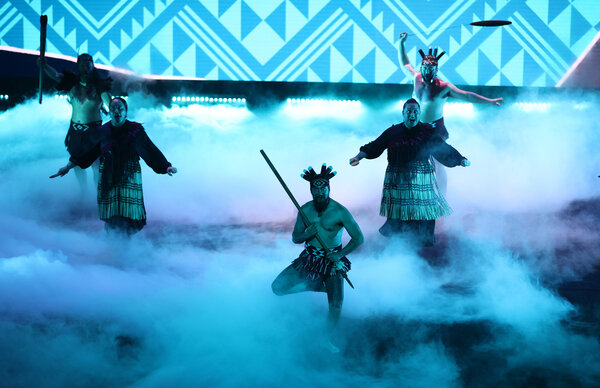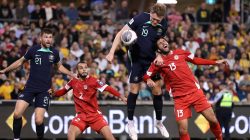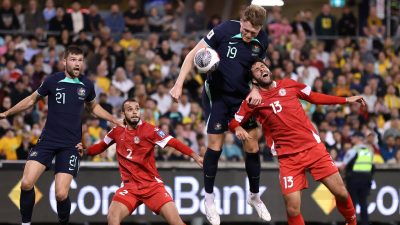The United States women’s soccer team will face the Netherlands, Vietnam and an as-yet-unknown playoff winner at next year’s Women’s World Cup — a fortunate draw for the Americans, even if it included the Dutch, the team they beat in the final to win their most recent world title in 2019.
The Americans learned their first-round opponents at the tournament’s draw on Saturday, and they will enter the tournament in Australia and New Zealand — the first co-hosts in the World Cup’s history — as the two-time defending world champion.
But they will arrive amid tectonic shifts in the women’s game, including an unsatisfying bronze medal at the last Olympics; a generational shift on their roster; and a surge of investment and interest that has powered the rise of new rivals like England and Spain and revived old ones like Canada, France and Germany.
“We have a winning mentality and when we don’t win, it hurts — it hurts all of us,” Vlatko Andonovski, the United States coach, said this month, after setbacks in high-profile games against England and Spain left the Americans stewing over back-to-back defeats for the first time in more than five years.
He and his players have long acknowledged that the world was closing the gap on the Americans’ hegemony in women’s soccer — Megan Rapinoe essentially admitted the gap no longer existed before the England game — and that the job of staying on top would only get harder as they pursued an extraordinary third straight World Cup title next year. But draws always bring hope, and the mood on Saturday was, momentarily at least, buoyant.
“Today’s a good day,” said Lindsey Horan, the United States midfielder. “It’s exciting.” She said the opening game against Vietnam “offered us a great chance to get going in the tournament.”
The Americans also will see a geographic advantage in their New Zealand-based group. They will open against Vietnam in Auckland (July 22), face the Netherlands in Wellington (July 27) and then close the first round against a playoff qualifier — either Portugal, Cameroon or Thailand — back in Auckland (August 1).
Should they finish in the top two in the group — an almost certain outcome — only then will they venture to Australia for the round of 16. (Finishing first in the group will be seen as vital for both the Americans and the Dutch, because the second-place team can expect to be matched against Sweden in the first knockout round.)
Some of the United States’ biggest rivals will have liked their draws, too: Sweden, the world’s second-ranked team, was drawn into a group with South Africa, Italy and Argentina, and Germany, the world No. 3 and the runner-up at last summer’s European Championship, will face Morocco, Colombia and South Korea.
England, the newly crowned European champion, will face a European foe (Denmark), a faded former power (China) and, like the United States, a playoff winner whose identity will not be confirmed until February. For England, it will be either Senegal, Haiti or Chile.
New Zealand will face Norway, the former champion, in the tournament’s opening game next July, and its co-host, Australia, will begin its quest against a newcomer, Ireland, before games against the World Cup mainstays Nigeria and Canada.
But the expanded field means so many new faces — as much as a quarter of the field could be playing in its first World Cup — that the favorites should experience little trouble in the group stage. The stakes are still high, though, especially for a group like the one that includes the United States and the Netherlands, two likely title contenders. That will make early success vital for positioning, since a stumble in the group stage could mean facing the toughest rivals much earlier in the knockouts.
Yet even as Ian Wright, the former England men’s player, declared his country the favorite, saying its players had “a target on their backs” as European champions, Andonovski knew that it was his side that would be, as usual, the target for everyone else.
“For a team that’s always done well historically,” Andonovski said, “the pressure’s always going to be there.”
The 2023 World Cup will be the first since FIFA, world soccer’s governing body, expanded the field to 32 teams. That produced a draw populated by familiar faces and first-time entrants: top-ranked challengers and former champions like Sweden, Germany, Spain, France and the Netherlands from Europe; regional powers like Brazil, Japan and Nigeria; and a handful of debutantes — Zambia, Morocco, Ireland, Vietnam and the Philippines.
The Americans? They qualified in July with the help of a mix of old and new: veterans like Alex Morgan, Rose Lavelle, Horan and Becky Sauerbrunn, but also newer faces like Sophia Smith, Trinity Rodman and Naomi Girma.
Andonovski’s team remains a blend of past and present: Rapinoe will most likely make the roster next summer, but another longtime mainstay, Carli Lloyd, spent this weekend helping to run the draw, not waiting anxiously for the results of it.
For Andonovski, the hard work is still ahead. By next summer, he hopes, his reimagining of his roster, his new mix of experience and youth, and his months of famously rigorous scouting, will give the United States its best chance at the first World Cup three-peat. He wasn’t always so sure.
“I have to say, if you ask me if we’re ready to go in a World Cup and compete in the World Cup tomorrow, we’re probably not ready for it,” Andonovski had told reporters after the Americans qualified in July. “But are we going to be ready in a year? Absolutely.”
Others are less than certain: The United States lost to England and Spain this month, its first consecutive losses in five years, and it faces another daunting challenge next month with two friendlies against Germany, the women’s Euros runner-up.
England, the best team in Europe at the moment and unbeaten in its last 24 games, and Canada, which defeated the United States on its way to the gold medal at the Tokyo Olympics, will be waiting. But so will the Germans and the Dutch and the Swedes and the Spanish and the rest.
The World Cup will open on July 20, with New Zealand and Australia both playing games at home, and conclude with the final on August 20 in Sydney’s Olympic stadium.
Sumber: www.nytimes.com








